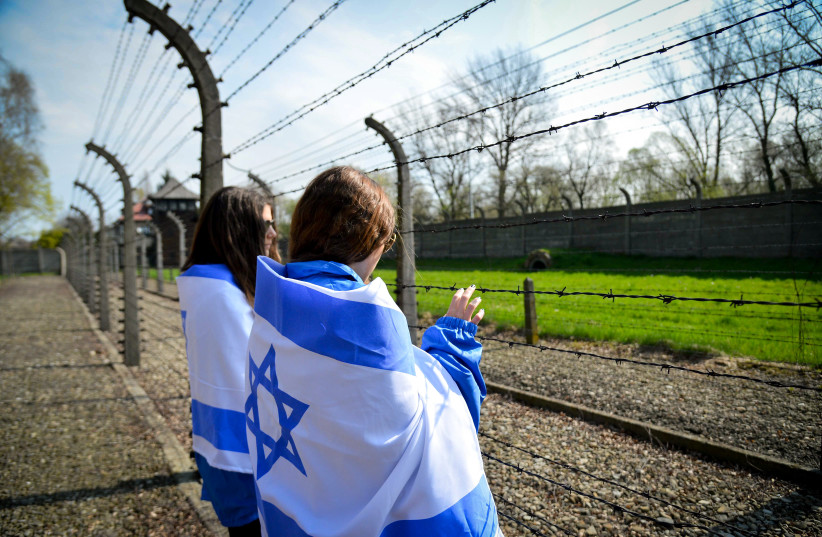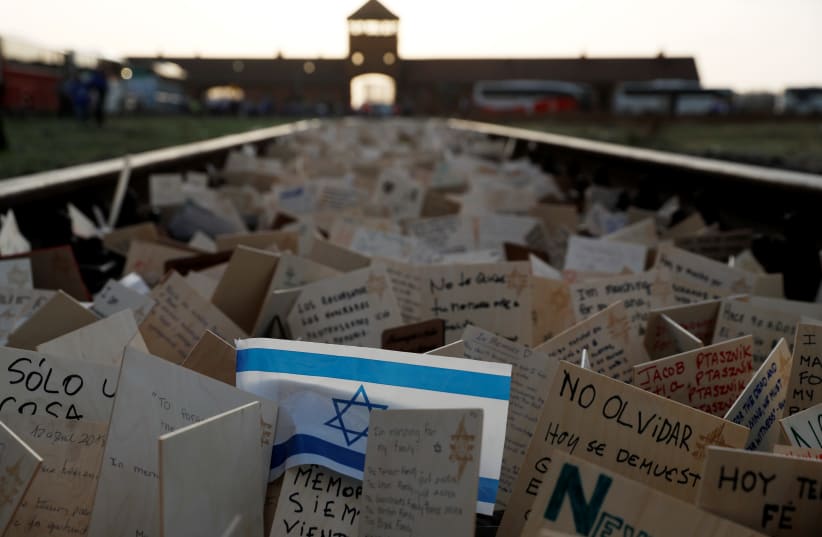Just over a week after the story regarding the new agreement between Israel and Poland and trips of Israeli youth to learn of the Holocaust broke, we now know that much of the “facts” as reported were less than truthful.
The flurry of outrage, castigation and near damnation was all over the news and commentary programs.
As the Haaretz newspaper headlined it on April 11, the “Israeli agreement with Poland on Holocaust school trips highlights dilemma over the historical narrative.” The paper accused Prime Minister Benjamin Netanyahu’s government of caving to “Polish propaganda.”
The Jerusalem Post editorial of April 14 noted that opposition leader Yair Lapid had attacked the Netanyahu government. Lapid termed it a “national disgrace” and added that “as the son of a Holocaust survivor... I am ashamed that the Israeli government has given up on its values and principles... ” On April 12 Post reporter Tovah Lazaroff published that Yad Vashem said it “won’t be involved in group visits to any site suspected of distorting events.”
Some Israeli school principals announced, solely based on the media, said they will refuse to have students visit sites related to German atrocities against non-Jewish Poles, which the agreement requires the students to see, amid concern that some of the sites glorify people who were involved in killing Jews. But does the agreement “require” such a visit?


No. The agreement does not.
Despite the “fact” that Haaretz claimed the agreement was “secret” and still being withheld from the public, Guy Zohar showed on his KAN From the Other Side TV program broadcast over Channel 11 (and uploaded to YouTube), the agreement – in black and white – appeared before the end of March on the official Knesset website.
That agreement, as reached between Israel and Poland, which still needs Knesset and the government approval, stipulates that the organizers of each Israeli trip only have to visit one of the sites of some 30 ones recommended by Poland. The choice of such a site is left to their discretion. Moreover, Polish student groups visiting Israel need to reciprocate, but more on that later.
OF THOSE sites, one is the Katyn Museum in Warsaw, which focuses on the Soviet massacre of approximately 22,000 Polish military officers at the start of World War II. However, what was left off of the site’s description is that hundreds of those killed in the People’s Commissariat for Internal Affairs (NKVD) mass murders of the Polish elite included Jews.
Prof. Marian Fuks of the Jewish Historical Institute verified the names of 231 Jews killed in Katyn, 188 killed in Kharkiv and 19 murdered in Mednoye. They were both active officers and numerous reserves. Among those killed in Katyn was Baruch Steinberg, the chief rabbi of the Polish Armed Forces.
I would think that this information not only would enrich the knowledge of visiting students in a general sense but add a layer of insight into the usually minimized focus on Jewish heroism during the Holocaust. Jews did fight the Nazis – as Poles.
Yad Vashem’s press release explained that the group trips must maintain “complete historical accuracy, including the role of Poles in the persecution, handing in, and murder of Jews during the Holocaust, as well as in acts of rescue... ” But it ominously added, “Nevertheless, the annex of the agreement contains a list of sites, compiled without Yad Vashem, which includes problematic sites that should not be visited in an educational [trip] context.”
As all groups take the lead from Yad Vashem, I am sure those sites will be explained to all trip coordinators. Yet there is another aspect to Yad Vashem’s pronouncement which includes the above-mentioned “Yad Vashem will not be involved in group visits to any site suspected of distorting the events of the Holocaust or presenting a historically inaccurate narrative.”
Yad Vashem only just recently added a small, and in my opinion, a nigh insignificant piece of information on the Warsaw Ghetto revolt that the revisionist Betar underground fighters – Jewish Military Union (ZZW) – participated in the fighting. Chaim Lazar published in Hebrew Muranowska 7, Masada of Warsaw covering this in 1963 and it appeared in English in 1966. Moshe Arens published Flags Over the Warsaw Ghetto in 2011, over a dozen years ago. Had Yad Vashem been distorting Holocaust history for decades?
As for “rescue,” a Yad Vashem internal decision defines the activities of the Jabotinsky Movement in the United States on behalf of Holocaust rescue, a group that is popularly known as the “Bergson Boys” and extensively researched by, among others, Prof. Rafael Medoff, as outside the scope of Yad Vashem’s museum.
Exactly which institution involved in trips to Poland, then, had been presenting a historically inaccurate narrative, one distorting events?
Left-wing educators dating back to the late education minister Shulamit Aloni complained that the trips to Poland and visits to Auschwitz and other concentration camps instill students with nationalistic feelings at the expense of universal values which could be interpreted as making them think too much about themselves as Jews. Other critics see too much emotional trauma inflicted on teenagers and the high financial cost imposed on parents in addition to the “nationalist message.”
I, for one, having been on the staff of one trip, can attest that prior to leaving, while on the buses and at the hotels at night, deep discussions are held by the educators. I have faith no distortions will occur.
To return to the list of Israel’s recommended sites, I found that the Kotel, the Western Wall, is not included. If anything, that should be a target of criticism.
The writer is a researcher, analyst and an opinion commentator on political, cultural and media issues.
